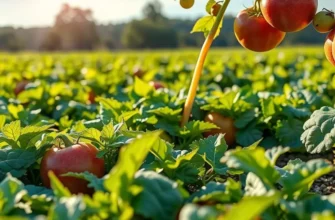Wrapping cheese correctly is crucial for maintaining its flavor, texture, and freshness. By following some simple yet effective techniques, you can significantly reduce food waste and improve your food management skills at home. Knowing how to store cheese properly will not only help you enjoy your favorite varieties to the fullest but also keep your kitchen organized and hygienic. Let’s dive into the methods that will keep your cheese in perfect condition.
Choosing the Right Wrapping Material

Selecting the right wrapping material for cheese ensures optimal freshness and quality. Let’s explore the most common materials: wax paper, cheese paper, and plastic wraps, each offering distinct functions and benefits.
Wax Paper is a familiar choice in cheese storage. Its non-stick nature makes it easy to use, while its breathability allows cheese to release its natural gases, which prevents moisture accumulation and mold growth. While wax paper is best for semi-soft cheeses like Gouda or Cheddar, its shortcomings lie in durability. Over time, it may become brittle and tear, inviting odors and dryness.
Cheese Paper is specialized wrapping used by fromageries for good reason—it extends a cheese’s shelf life better than many alternatives. Cheese paper combines waxed paper’s breathability with extra layers that protect against moisture loss and external odors. This is ideal for soft cheeses like Brie, which need a moisture balance to maintain their creaminess. However, cheese paper can be pricey and harder to find in typical supermarkets.
Plastic Wraps are often feared for suffocating cheese, but they have their place. Hard cheeses like Parmesan benefit from a snug plastic wrap to maintain moisture levels, which helps preserve their flavor and texture over time. The downside? Plastics can taint cheese with unpleasant smells if improperly sealed and can contribute to environmental waste. For an eco-conscious kitchen, reusable silicone sheets present a viable alternative.
Layering materials can maximize freshness. For example, you might wrap cheese first in cheese paper to maintain proper moisture levels, then cover it in plastic wrap for an airtight seal. This technique particularly benefits aging cheeses, extending their shelf lives.
Selecting suitable material requires considering the specific cheese type and your storage goals. Cheese paper for soft, moisture-rich varieties; wax paper for semi-soft options; and plastic for firm cheeses seeking longer preservation. If sustainability is your priority, consider reusable wrappers and embrace eco-friendly practices in your kitchen, possibly explored in more detail at this insightful page. By employing the correct wrapping strategies, you can enjoy fresher selections and contribute to reduced food waste—a simple yet effective step towards responsible consumption.
Techniques for Wrapping Cheese

Wrapping cheese correctly is crucial to maintaining its flavor and texture. Let’s explore effective methods to wrap different types of cheese while controlling air exposure and moisture.
Soft cheeses like Brie and Camembert need to breathe. Start by wrapping them in wax paper, which allows some air exchange. This action prevents the cheese from becoming overly moist or dry. Once sealed in wax paper, cover it with a layer of plastic wrap or aluminum foil to add a protective barrier against other odors in the fridge.
Hard cheeses, such as cheddar or Parmesan, require a different approach. Start by tightly covering them in parchment paper. This step ensures they aren’t exposed to excessive moisture, which can cause them to spoil. Finally, follow up with plastic wrap for an airtight seal, keeping the cheese blocks from losing moisture while limiting how much air reaches the surface.
Specialty cheeses, including those infused with herbs or crafted with unique techniques, require special attention. A cheesecloth wrap is ideal here, as it offers breathability and protection. For these cheeses, you might even consider reusing an older cheese box or case to keep them stored efficiently.
Balancing air exposure and moisture is crucial, especially for cheeses that continue aging even in storage. Ensure your wrap allows minimal breathing; this can lengthen the cheese’s shelf life significantly. For a sustainable approach to storage, you might explore eco-smart kitchen storage techniques that integrate reusable materials into your routine.
Ultimately, mastering the art of cheese wrapping helps reduce spoilage. Cheese storage is not only about keeping the cheese fresh but also about respecting the craft of cheesemakers. By understanding these wrapping techniques, your cheese remains flavorful, and you can enjoy every slice to its fullest potential.
Final words
Properly wrapping cheese is essential for maintaining its quality and flavor while minimizing waste. By selecting the right materials and employing effective wrapping techniques, you can enhance your food storage practices and extend the life of your cheese. Remember that cheese can be an investment, and enjoying it at its best is key to a sustainable kitchen. Take these actionable steps, and you will elevate not just your cheese selection but also your overall food management skills. Happy cheese wrapping!







